Table of Contents[Hide][Show]
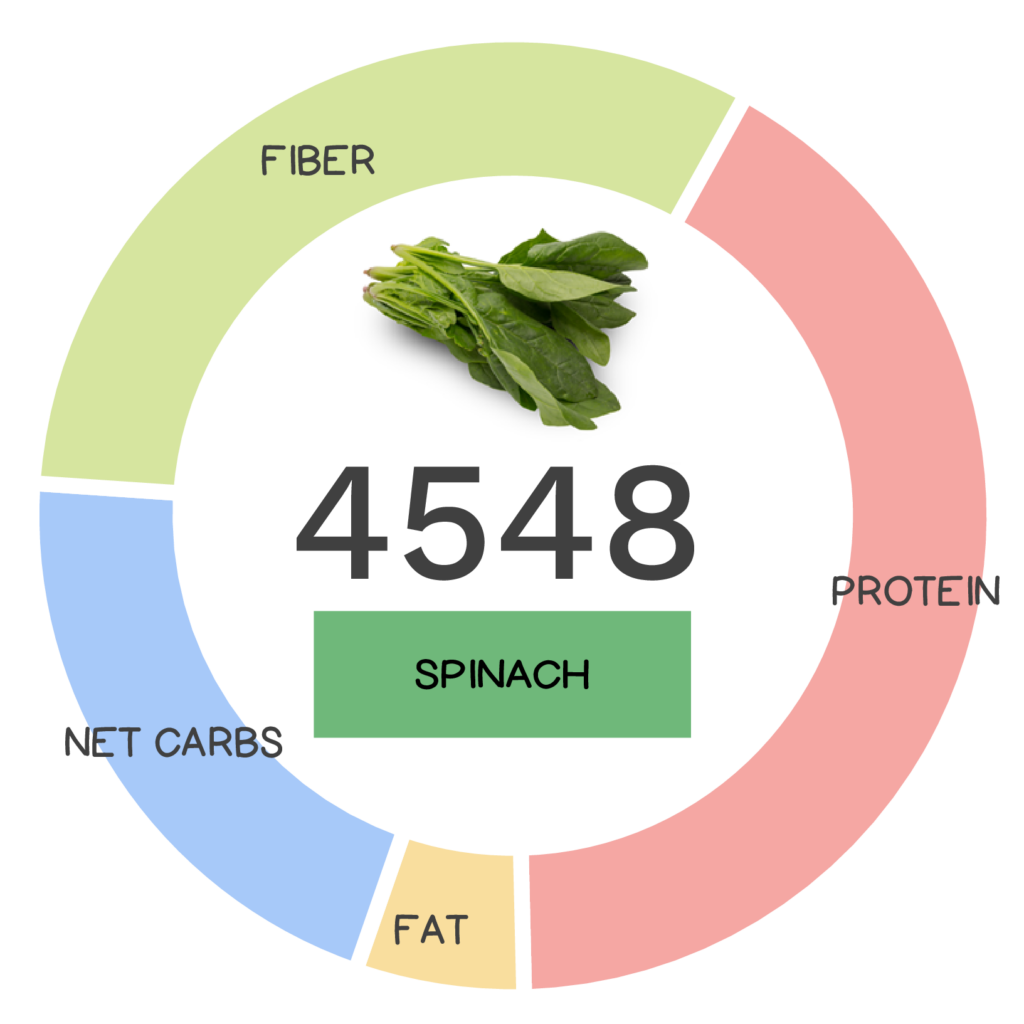
Spinach has been cultivated for over 2,000 years and is thought to have originated in ancient Persia (modern Iran and surrounding countries), then brought to India and ancient China through trading routes, where it was known as the “Persian vegetable” or the “herb of Persia”. From there, it was carried to Italy and then continued to thrive all over Europe during the Renaissance, gaining common use because it appeared in early spring when fresh local vegetables were not available. Interestingly, it is rumored that many spinach-containing dishes include the word “Florentine” because the French queen Catherine de Medici imported spinach from her hometown of Florence. It’s also said that she enjoyed it so much, it was served at every meal! The Spanish eventually brought spinach to the Americas. Today, it is widely cultivated all over the world, with China alone accounting for 90% of the world’s spinach production! The US is the second largest producer with 1.4% and top spinach-producing states include California, Arizona, and New Jersey.
Spinach has been cultivated for over 2,000 years and is thought to have originated in Persia, eventually spreading through trading routes, where it was known as the “Persian vegetable” or the “herb of Persia”.
Spinach (Spinacia oleracea) is a member of the Amaranthaceae family, which also includes beets, chard and quinoa. Despite its reputation for being a nutritious crop, US consumption remains low in comparison to other leafy green vegetables such as lettuce and cabbage. In 2012, on average Americans consumed only 0.91 grams per day of fresh spinach and 0.49 grams per day of processed spinach (e.g., frozen). In contrast, European consumption is approximately 1.6 grams per day! On the plus side, spinach availability in the US is dramatically increasing and popularity is on the rise, most likely because of its healthy reputation. In fact, March 26 is celebrated as National Spinach Day!
The Best Support to Build This Important Daily Habit!
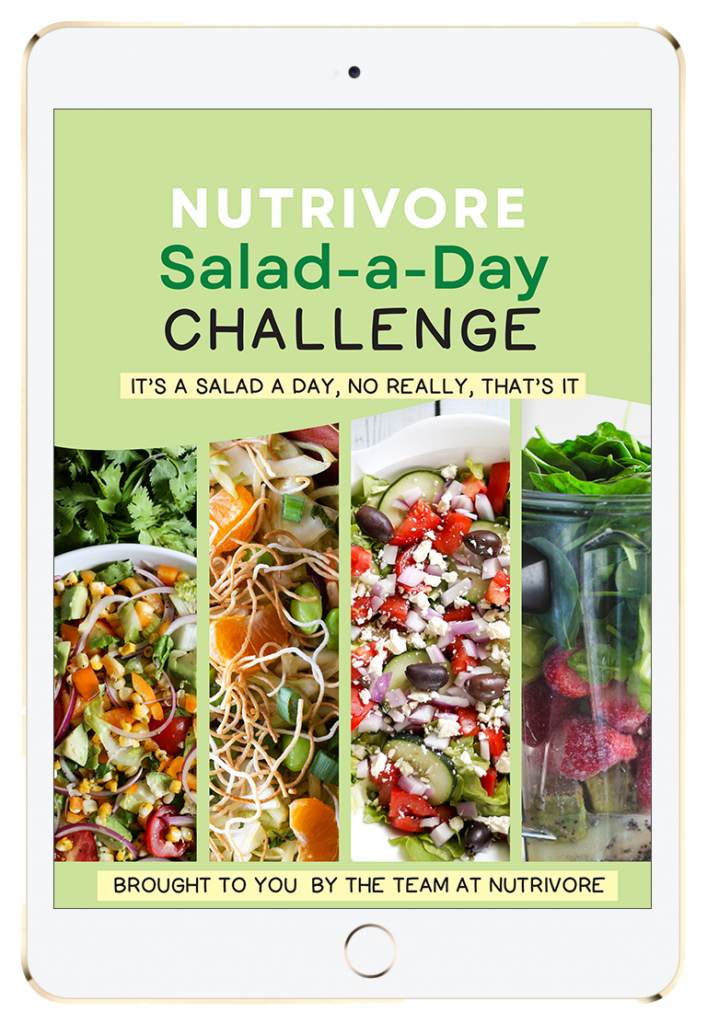
Nutrivore Salad-a-Day Challenge
The Nutrivore Salad-a-Day Challenge e-book explains all the ways a daily salad can improve your health, plus includes a collection of 10 handy visual guides and food lists, like the Nutrivore Salad Matrix.
Plus, you’ll find 50+ recipes, including over 30 of our favorite salad recipes plus recipes for delicious dressings and tasty toppers.
Buy now for instant digital access.

Nutrivore Score for Spinach – 4548
Spinach has a Nutrivore Score of 4548, making it one of the most nutrient-dense foods on the planet! Plus, it is a low-carb and low-calorie-density food; amazingly the calorie count of spinach is just 7 calories per cup!
Per serving, spinach is a best source (>50% daily value) of carotenoids, polyphenols, and vitamin K; is an excellent source (20-50% daily value) of manganese, vitamin A, and vitamin B9 (folate); and is a good source (10-20% daily value) of coQ10, magnesium, and vitamin C.
Ditch Diets. Embrace Nutrients. Start with this FREE Guide.
Sign up for the free Nutrivore Newsletter, your weekly, science-backed guide to improving health through nutrient-rich foods — without dieting harder —and get the Beginner’s Guide to Nutrivore delivered straight to your inbox!

Spinach Nutrition Facts
One serving of spinach is standardized to 2 cups of spinach, or about 60 grams (2.1 ounces). A typical bunch of spinach weighs 340 grams, which is roughly equivalent to 5 1/2 servings. When you cook spinach, it reduces in volume by approximately 85% which means: 6 cups raw spinach is roughly equivalent to 1 cup boiled spinach.
Spinach Nutrition Facts per Serving
| Spinach, raw | Nutrivore Score: 4548 | Nutrient Density: Super! |
|---|---|---|
| Serving Size: 2 cups (60 grams) | Protein: 1.7 grams | Net Carbohydrates: 0.9 grams |
| Calories: 14 | Total Fat: 0.2 grams | Dietary Fiber: 1.3 grams |
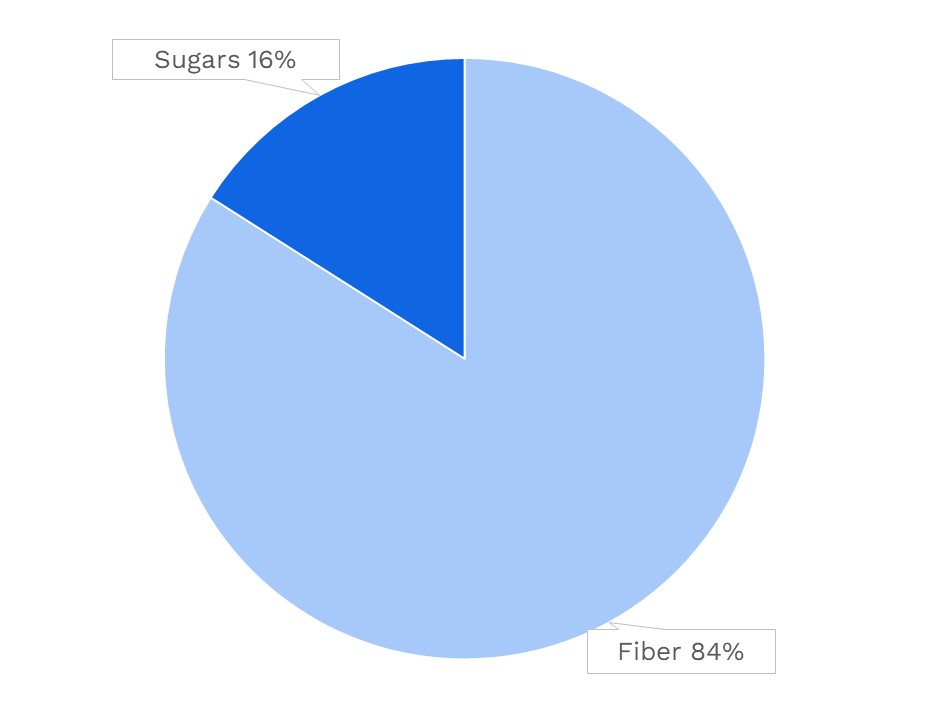
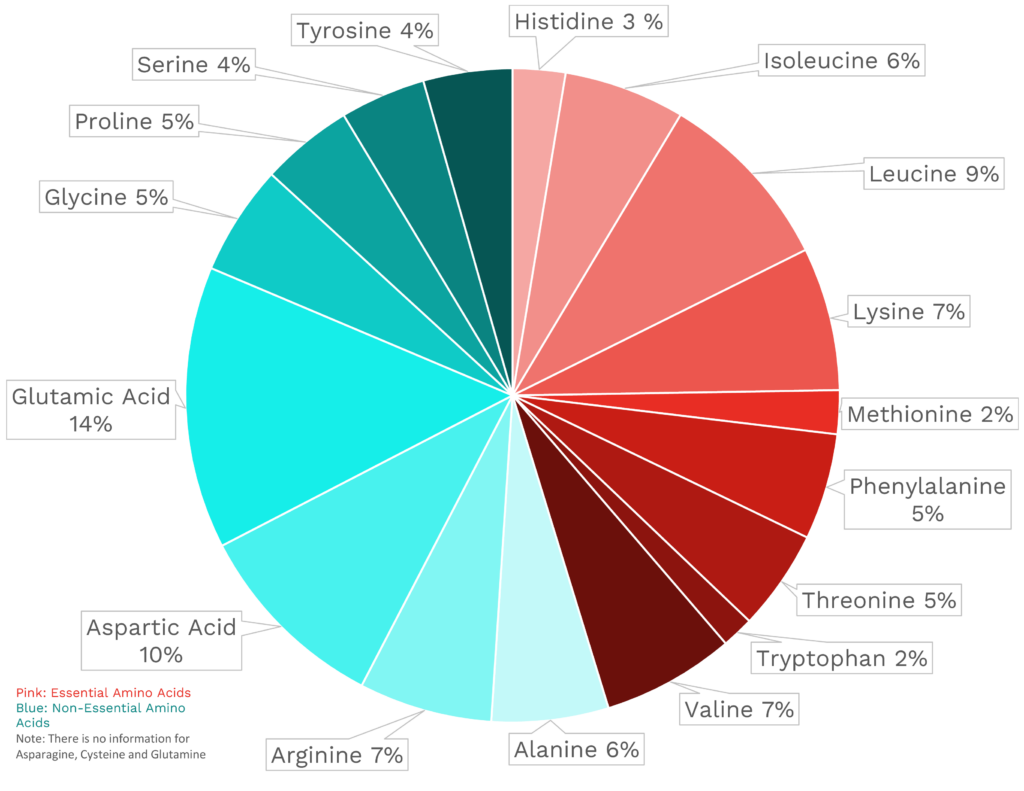
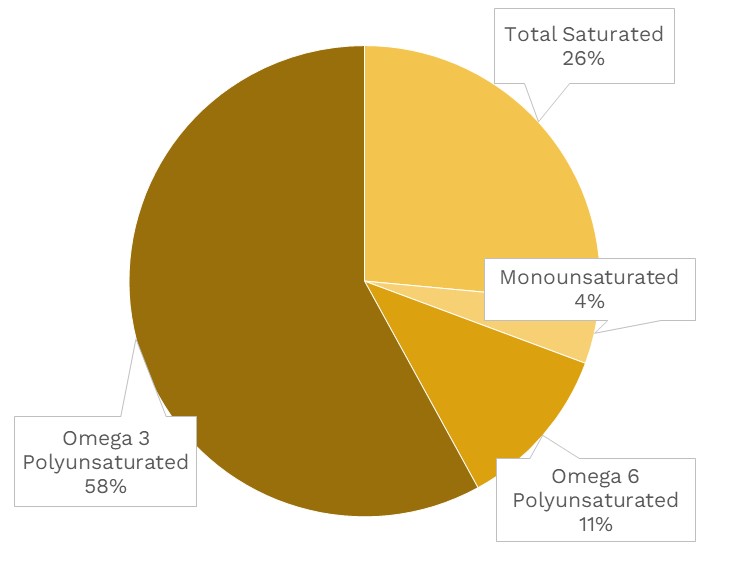
| VITAMINS | ||
|---|---|---|
| Vitamin A | 281.4 μg RAE | 31% DV |
| Vitamin B1 (Thiamin) | 46.8 μg | 4% DV |
| Vitamin B2 (Riboflavin) | 113.4 μg | 9% DV |
| Vitamin B3 (Niacin) | 0.4 mg | 3% DV |
| Vitamin B5 (Pantothenic Acid) | 0.0 mg | 1% DV |
| Vitamin B6 (Pyridoxine) | 117.0 μg | 7% DV |
| Vitamin B7 (Biotin) | 2.4 μg | 8% DV |
| Vitamin B9 (Folate) | 116.4 μg | 29% DV |
| Vitamin B12 (Cobalamin) | 0.0 μg | 0% DV |
| Vitamin C | 16.9 mg | 19% DV |
| Vitamin D (D2 + D3) | 0.0 μg | 0% DV |
| Vitamin E | 1.3 mg | 9% DV |
| Vitamin K | 289.7 μg | 241% DV |
| Choline | 11.6 mg | 2% DV |
| Myo-Inositol | 4.8 mg | ~ |
| CoQ10 | 0.6 mg | ~ |
| FUNCTIONAL FATS | ||
|---|---|---|
| MUFA | 0.0 g | 0% DV |
| ALA | 82.8 mg | 5% DV |
| EPA + DHA | 0.0 mg | 0% DV |
| CLA | ~ | ~ |
| Linoleic Acid | 0.0 g | 0% DV |
| MCT’s | 0.0 g | ~ |
| MINERALS | ||
|---|---|---|
| Calcium | 59.4 mg | 5% DV |
| Copper | 78.0 μg | 9% DV |
| Iodine | ~ | ~ |
| Iron | 1.6 mg | 9% DV |
| Magnesium | 47.4 mg | 11% DV |
| Manganese | 538.2 μg | 23% DV |
| Phosphorus | 29.4 mg | 2% DV |
| Potassium | 334.8 mg | 7% DV |
| Selenium | 0.6 μg | 1% DV |
| Sodium | 47.4 mg | 2% DV |
| Zinc | 0.3 mg | 3% DV |
| PHYTONUTRIENTS | ||
|---|---|---|
| Carotenoids | 10694.4 μg | ~ |
| Polyphenols | 414.0 mg | ~ |
| Phytosterols | 6.4 mg | ~ |
| Glucosinolates | ~ | ~ |
| Thiosulfinates | ~ | ~ |
| Betalains | ~ | ~ |
| AMINO ACIDS & PEPTIDES | ||
|---|---|---|
| Taurine | ~ | ~ |
| Ergothioneine | 0.0 mg | ~ |

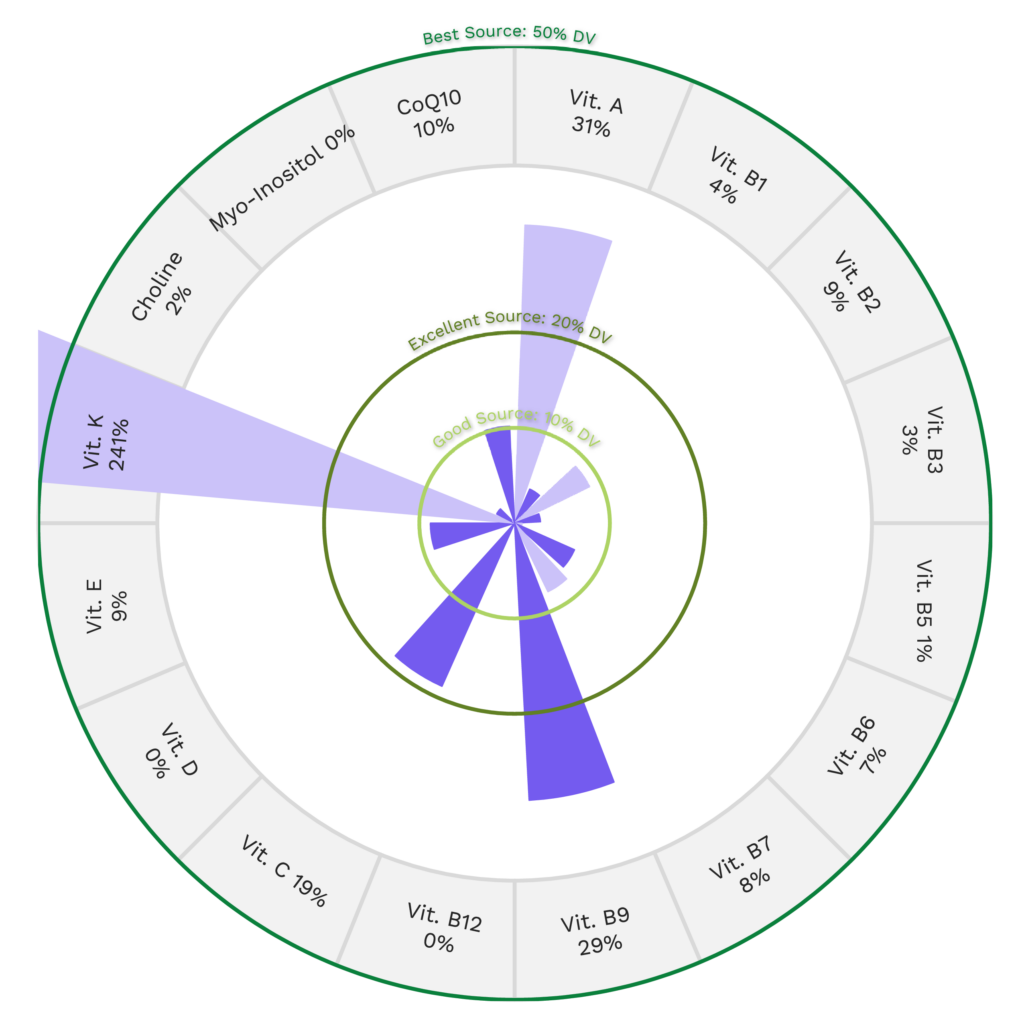
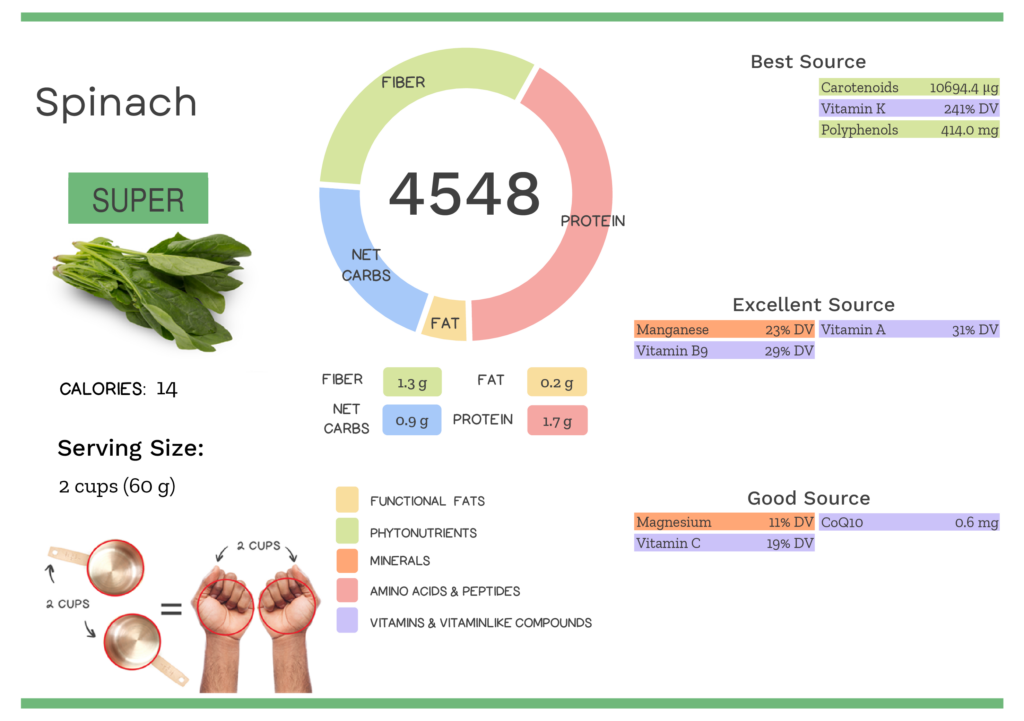
Feel Good About What You Eat—Without Overthinking It

Nutrivore90 is a FREE 90-day habit-centered challenge focused on adding nutrient-dense foods, not cutting things out.
- No tracking, no food rules—just small steps that actually stick
- Weekly emails, printable guides, and a supportive community—all completely free.
- Nutrivore90 starts January 5th, 2026!!
Spinach Nutrition Varies With Cooking and Processing
The Nutrivore Score for spinach varies depending on method of preparation and processing. For instance, frozen spinach (either whole or chopped leaves) and canned spinach are convenient options available year-round at your local grocery store.
| NUTRIVORE SCORE | |
|---|---|
| Spinach, canned, no salt added, solids and liquids | 4031 |
| Spinach, canned, regular pack, drained solids | 4117 |
| Spinach, canned, regular pack, solids and liquids | 4020 |
| Spinach, cooked, boiled, drained, with salt | 4561 |
| Spinach, cooked, boiled, drained, without salt | 4561 |
| Spinach, frozen, chopped or leaf, cooked, boiled, drained, with salt | 3479 |
| Spinach, frozen, chopped or leaf, cooked, boiled, drained, without salt | 3531 |
| Spinach, frozen, chopped or leaf, unprepared | 3392 |
| Spinach, raw | 4548 |
Impressed by the unbe-LEAF-able nutrition in spinach? Maybe your friends will be too!
Health Benefits of Spinach Nutrients
Let’s take a closer look at all of the best and excellent source of nutrients found in a 2-cup serving of spinach and see how they benefit our health.
Spinach Provides 241% DV Vitamin K
Spinach is a particularly awesome source of vitamin K, providing a whopping 241% of the daily value per 2-cup serving!
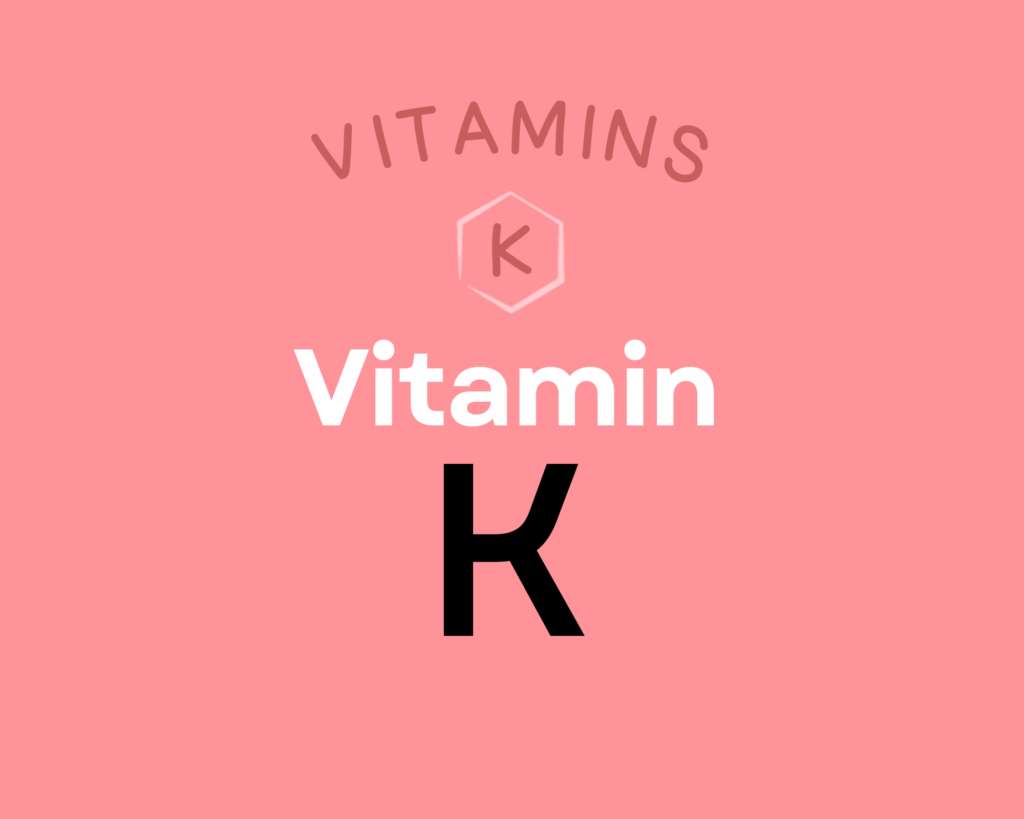
Vitamin K is actually a group of fat-soluble vitamins with a similar molecular structure, existing as K1, multiple isoforms of K2, and the synthetic form K3. This nutrient plays a vital role in coagulation, due to serving as a cofactor for proteins needed for blood clotting; it’s also essential for bone metabolism, cellular function, and the prevention of soft tissue calcification. Getting enough vitamin K2 can help protect against cardiovascular disease, may improve bone mineral density and skeletal health, and may even support endocrine function and brain health; there’s also some limited evidence it has anti-cancer and anti-inflammatory properties. Learn more about vitamin K here.
Spinach Provides 10,694.4 μg of Carotenoids
Spinach is also an amazing source of carotenoids, providing an impressive 10,694.4 μg of carotenoids per 2-cups serving.
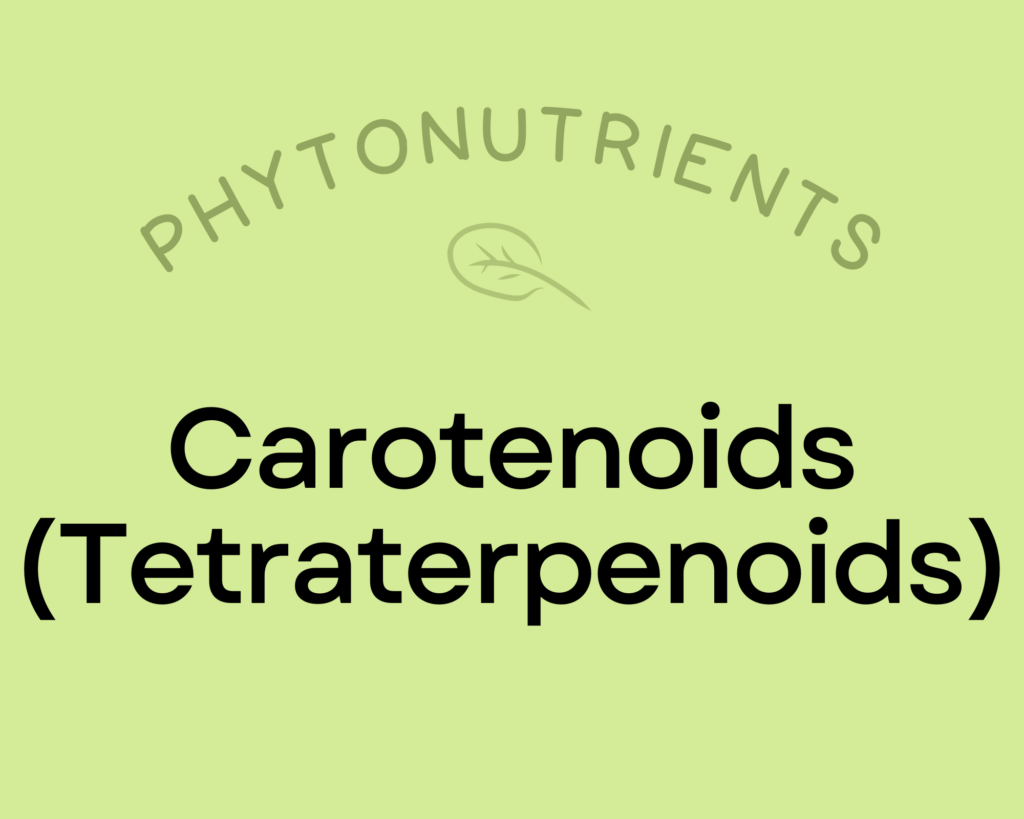
Carotenoids are a diverse group of phytonutrients that are responsible for giving fruits and vegetables vibrant red, orange, and yellow pigmentation. They were one of the earliest phytonutrients ever investigated by scientists (with research dating back to the 1800s!). Across studies, eating foods high in carotenoids appears to reduce the risk of head and neck cancers, supports vision health (particularly age-related eye diseases), may protect against metabolic syndrome and diabetes, and can reduce inflammation. Carotenoids have strong antioxidant properties, and help facilitate communication between cells by promoting the synthesis of connexin proteins, which create gap junctions in cell membranes that allow small molecules to be exchanged (which is part of how cells “talk” to each other!). Consuming carotenoids with fat significantly increases their absorption. Learn more about carotenoids here.
Specifically, spinach is considered to be one of the richest plant sources of the carotenoid, lutein in addition to containing β-carotene and zeaxanthin.
Lutein and zeaxanthin play major roles in maintaining eye health, protecting critical parts of the eye from light-induced oxidative damage. As a result, these two carotenoids can help prevent age-related macular degeneration, cataracts, retinitis pigmentosa. They have also been shown to have anti-inflammatory effects and support cognitive function and memory!
Spinach Provides 414.0 mg of Polyphenols
Spinach is also a best source of polyphenols, providing 414.0 mg polyphenols per 2-cup serving. In fact, spinach, along with broccoli, has the highest total phenolic acid content among leafy green veggies – that means ~40% more phenols than cabbage and ~70% more phenols than lettuce!
Spinach, along with broccoli, has the highest total phenolic acid content among leafy green veggies!
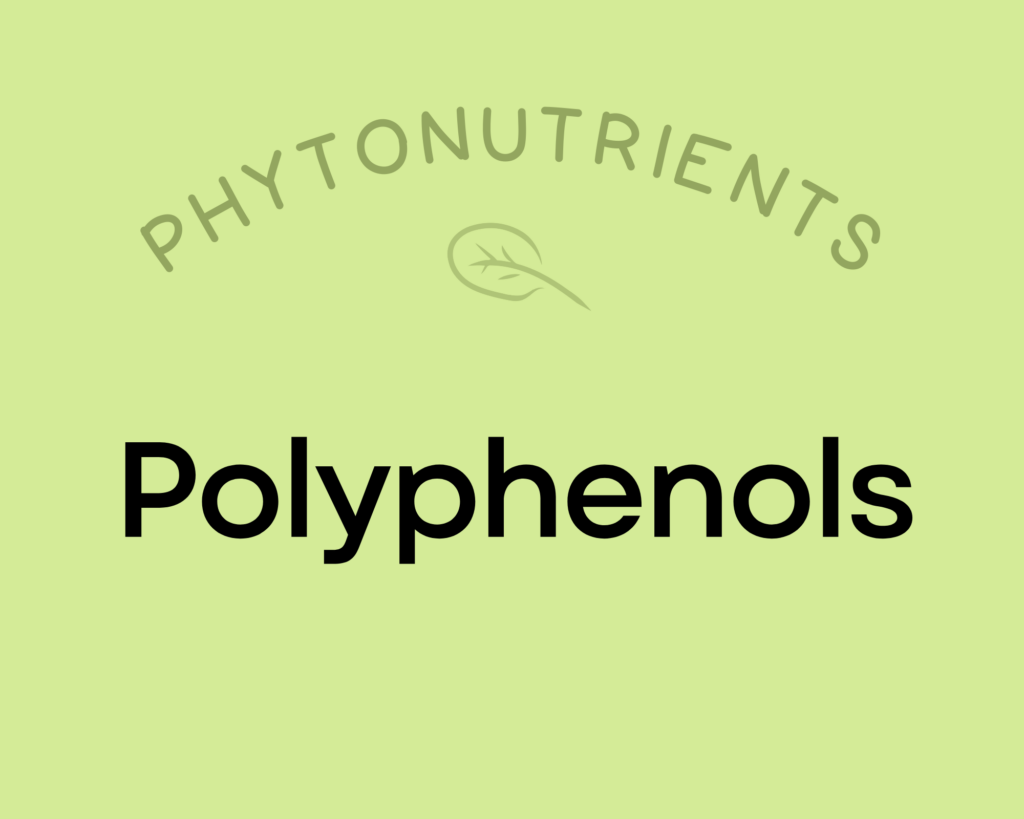
Polyphenols play a huge role in protecting against cancer, heart disease, diabetes, asthma, osteoporosis, neurodegenerative diseases, and other conditions associated with oxidative stress. In fact, a major reason foods like red wine and olive oil (as well as diets rich in both, such as the Mediterranean diet) show up as so beneficial may be due to their high polyphenol content! Along with chronic diseases, supplementing with polyphenols has been shown to protect against infections and reduce the signs of aging. Polyphenols exert their most potent effects by acting as antioxidants—preventing cellular damage by neutralizing hazardous oxygen radicals and improving cellular health as a result (which, in turn, benefits virtually every system in the body). As a result of their antioxidant properties, polyphenols also boost the immune system and protect against both chronic and acute diseases. In addition, polyphenols can help regulate enzyme function, stimulate cell receptors, modulate the functions of inflammatory cells (including T and B lymphocytes, macrophages, platelets, and natural killer cells), alter adhesion molecule expression, affect nerve cells and cardiac muscle cells, and exert antiviral effects. Learn more about polyphenols here.
Another phytonutrient found in abundance in spinach is chlorophyll!
Spinach Provides 31% DV Vitamin A
In addition, spinach is an excellent source of vitamin A, providing 31% of the daily value per 2-cup serving.

Vitamin A is actually a group of fat-soluble retinoids with vitamin A activity in the body. This nutrient is essential for a number of physiological functions—particularly vision, reproduction, thyroid health, immunity, and cellular communication. Getting enough vitamin A helps protect against some vision disorders (like night blindness and macular degeneration), supports a healthy menstrual cycle and sperm production, reduces infection risk, and allows for proper growth and development from the fetal years through childhood. Learn more about vitamin A here.
Spinach Provides 29% DV Vitamin B9 (Folate)
This leafy green is also an excellent source of vitamin B9 (folate, also sometimes called folic acid, although folic acid refers to the synthetic form of vitamin B9), providing 29% of the daily value per 2-cup serving.

Vitamin B9 (folate) is an essential B vitamin that plays roles in blood cell production, the formation of genetic material (including DNA), and cell growth and function. It’s particularly important during pregnancy, when folate demands increase due to the rapid creation of new cells and DNA. Along with helping protect against fetal development problems, folate can support cardiovascular health, potentially protect against certain cancers, and reduce the risk of cognitive and neurological disorders later in life. Learn more about vitamin B9 here.
Spinach Provides 23% DV Manganese
Spinach is an excellent source of the mineral manganese, providing 23% of the daily value per 2-cup serving.
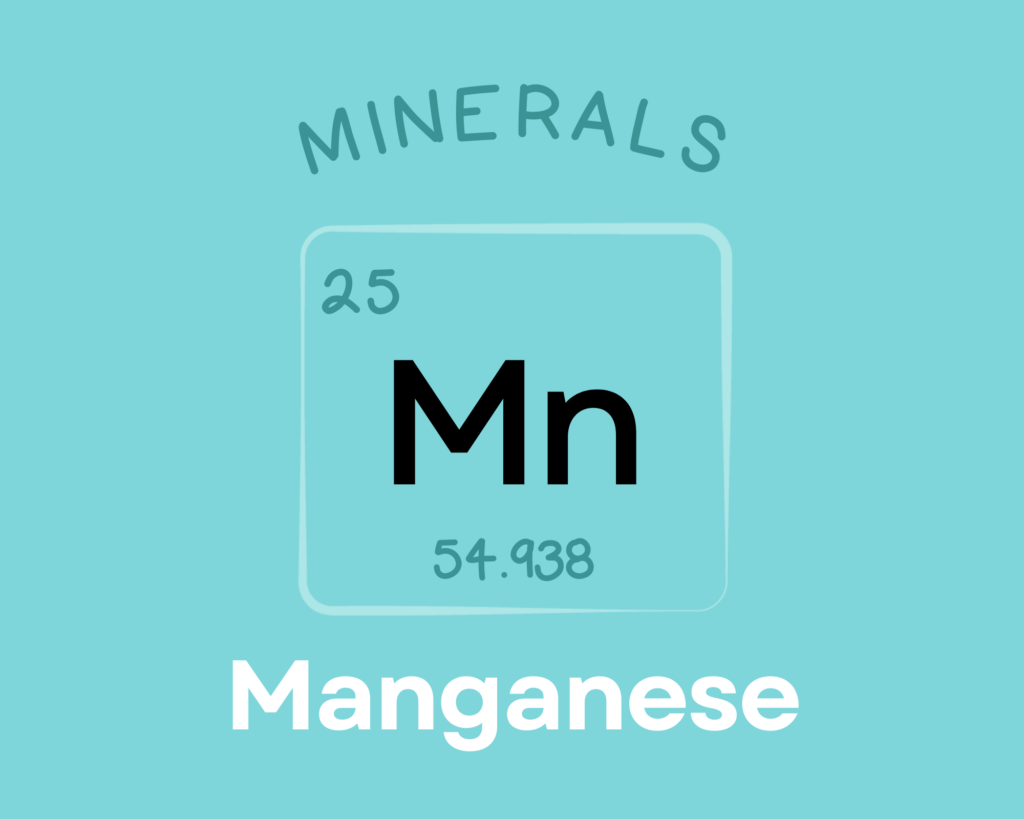
Manganese is an essential mineral that serves as a cofactor and component of numerous enzymes. Through these roles, it’s involved in carbohydrate metabolism, amino acid synthesis, gluconeogenesis, detoxification, lipid processing, free radical defense, bone and collagen formation, and wound healing. Although the research so far is limited, some evidence suggests that manganese can protect against osteoporosis and diabetes, and may even be involved in seizure disorders. Learn more about manganese here.
Spinach also has some other unique components which contribute to its overall health benefits, including thylakoids and nitrates.
Learn What Foods Are the Best Sources of Every Nutrient

The Top 25 Foods for Every Nutrient
The Top 25 Foods for Every Nutrient e-book is a well-organized, easy-to-use, grocery store-friendly guide to help you choose foods that fit your needs of 43 important nutrients while creating a balanced nutrient-dense diet.
Get two “Top 25” food lists for each nutrient, plus you’ll find RDA charts for everyone, informative visuals, fun facts, serving sizes and the 58 foods that are Nutrient Super Stars!
Buy now for instant digital access.
How Much Spinach Should We Eat per Day?
Adding spinach to your diet may not result in an instant swelling of your biceps à la Popeye, but it is incredibly nutrient-dense and has plenty of “helt” benefits to offer!
Every serving of fresh, whole vegetables or fruit we eat daily reduces the risk of all-cause mortality by 5% to 8%, with the greatest risk reduction seen when we consume five or more servings per day. In fact, consuming 800 grams of vegetables and fruits daily reduces all-cause mortality by 31% compared to eating less than 40 grams daily. A 2017 meta-analysis showed that 2.24 million deaths from cardiovascular disease, 660,000 deaths from cancer, and 7.8 million deaths from all causes could be avoided globally each year if everyone consumed 800 grams of veggies and fruits every day.
Eating vegetables and fruit in abundance lowers risk of cancer, cardiovascular disease, type 2 diabetes, obesity, chronic kidney disease, osteoporosis and bone fragility fractures (including hip fracture), cognitive impairment and dementia (including Alzheimer’s disease), neurodegenerative diseases, asthma, allergies, chronic obstructive pulmonary disease, age-related macular degeneration, cataracts, glaucoma, depression, ulcerative colitis and Crohn’s disease, rheumatoid arthritis, inflammatory polyarthritis, non-alcoholic fatty liver disease, acne, seborrheic dermatitis, and lowers markers of inflammation. Learn more in Importance of Vegetables and Fruit.
Covering half of your plate with a variety of vegetables (and three quarters of your plate if your starchy food is a root vegetable or winter squash) at each meal is a simple way to easily achieve the goal of 5 or more servings of vegetables daily.
One to two servings per day of leafy greens is a great target, but there doesn’t seem to be any downside to consuming way more than that!
Studies show that leafy greens (like spinach) offer a huge range of scientifically demonstrated health benefits. For instance, for every 1/3 cup of leafy greens you eat each day you reduce the risk of type 2 diabetes by 13%. Leafy green consumption has also been associated with a 40% lower risk of death from colorectal cancer in men, a 16% reduction in cardiovascular disease and slower cognitive decline in elderly adults. Amazingly, an average of only 1.3 servings per day was associated with the equivalent of being 11 years younger in cognitive age! Taking this all into account means that one to two servings per day of leafy greens (like spinach) is a great target, but there doesn’t seem to be any downside to consuming way more than that!
Just remember, it’s always best to mix up the veggies you eat day to day (aiming for a wide variety of different vegetables and fruits throughout the week), and spinach definitely has a place at the table.
Easily track your servings of Nutrivore Foundational Foods!

The Nutrivore Weekly Serving Matrix
The Nutrivore Weekly Serving Matrix digital resource is an easy-to-use and flexible weekly checklist designed to help you maximize nutrient-density and meet serving suggestions of Nutrivore foundational foods, all without having to weigh or measure your foods!
Includes a 22-page instructional guide and downloadable interactive guides.
Buy now for instant digital access.
Citations
Expand to see all scientific references for this article.
Clements RS Jr, Darnell B. Myo-inositol content of common foods: development of a high-myo-inositol diet. Am J Clin Nutr. 1980 Sep;33(9):1954-67. doi: 10.1093/ajcn/33.9.1954. PMID: 7416064.
Ey J, Schömig E, Taubert D. Dietary sources and antioxidant effects of ergothioneine. J Agric Food Chem. 2007 Aug 8;55(16):6466-74. doi: 10.1021/jf071328f. Epub 2007 Jul 6. PMID: 17616140.
Gillooly M, Bothwell TH, Torrance JD, MacPhail AP, Derman DP, Bezwoda WR, Mills W, Charlton RW, Mayet F. The effects of organic acids, phytates and polyphenols on the absorption of iron from vegetables. Br J Nutr. 1983 May;49(3):331-42. doi: 10.1079/bjn19830042. PMID: 6860621.
Han JH, Yang YX, Feng MY. Contents of phytosterols in vegetables and fruits commonly consumed in China. Biomed Environ Sci. 2008 Dec;21(6):449-53. doi: 10.1016/S0895-3988(09)60001-5. PMID: 19263798.
Pravst I, Zmitek K, Zmitek J. Coenzyme Q10 contents in foods and fortification strategies. Crit Rev Food Sci Nutr. 2010 Apr;50(4):269-80. doi: 10.1080/10408390902773037. PMID: 20301015.
USDA Food Central Database: Spinach, raw
Watanabe T, Kioka M, Fukushima A, Morimoto M, Sawamura H. Biotin content table of select foods and biotin intake in Japanese. Int J Anal Bio-Sci. 2014. Vol 2(4):109-125.


